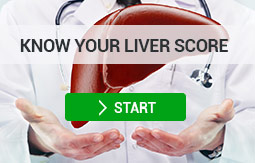Trying to decode health information from a nutrition label can be overwhelming. Let’s break down what these numbers mean for your health.
| Per 100 grams | Fast food Cheese-
burger |
Donut | Pepperoni Pizza | White Rice | Brown Rice | Apple | Tofu | Walnuts |
| Calories (kcal) | 263 | 318 | 273 | 151 | 123 | 58 | 84 | 654 |
| Fiber (g) | 1.1 | 1.2 | 1.7 | 0.9 | 1.6 | 2.8 | 0.8 | 6.7 |
| Sodium (mg) | 626 | 412 | 518 | 5 | 4 | 1 | 4 | 2 |
| Sugar(g) | 6.22 | 34.12 | 3.76 | 0.1 | 0.24 | 9.59 | 0.30 | 2.61 |
| Fat (g) | 11.79 | 8.24 | 10.50 | 0.27 | 0.97 | 0.19 | 4.40 | 65.21 |
| Carbs (g) | 27.81 | 56.47 | 31.01 | 33.88 | 25.58 | 13.61 | 2.30 | 13.71 |
| Protein (g) | 12.97 | 3.53 | 13.59 | 3.20 | 2.74 | 0.44 | 8.90 | 15.23 |
Source: USDA
Calories (also called “Energy” on some nutrition labels): Weight is gained by consuming more calories than you burn, through your baseline metabolic rate and exercise. In order to maintain weight, a woman of average weight would require 2000 calories per day, and 1500 calories to lose one pound of weight per week. A man would require 2500 calories to maintain his weight, and 2000 to lose one pound of weight per week. However, how many calories you need varies depending on variables such as gender, age, height, current weight, and general level of activity. To find out how many calories are recommended for your specific needs, use Authority Nutrition’s calorie calculator.
However, it’s important to note that a low-calorie diet is not necessarily synonymous with a healthy diet. High calorie isn’t necessarily bad – as evidenced by walnuts’ nutritional profile. While nuts should be consumed in moderation if you’re looking to lose weight,
You can consume 300 calories by eating approximately one donut, two and a half cups of French lentil soup, or ten cups of chopped broccoli. And how full you are after you consume 300 calories will determine how many subsequent calories you’ll choose to eat. Do you think one donut or two and a half cups of lentil soup would be more filling? Read on to find out why lentils satisfy hunger in a way that donuts and fast food can’t.
Fiber: High fiber foods take longer to digest, which keeps you feeling full for longer. This helps reduce calorie intake and prevent overeating – because that extra snack isn’t as appealing when you’re already full. Fiber also lowers cholesterol and stabilizes blood sugar levels. A high fiber diet decreases the risk of high levels of toxins remaining in the body because it assists in bringing toxins to the liver and filtered out of the body. So fiber isn’t just good for weight loss, it’s also helpful in disease prevention.
Aim for 20 – 35 grams of fiber each day. Start your day with a fiber-rich breakfast by choosing a bowl of oatmeal with your favorite fruit and nuts – that’s about 10 grams of fiber already! Other good sources of fiber include beans, whole-wheat bread, brown rice, fruit, and vegetables.
Salt: High salt intake is associated with high blood pressure and increased risk of strokes. Salt increases thirst and also how much water is retained in the body. Increased water retention causes swelling in the body and puts extra stress on the functioning of internal organs, such as the liver. The Dietary Guidelines for Americans recommend consuming no more than 2,300 mg of sodium and ideally under 1,500 mg each day. However, the average American adult ingests over 3,400 milligrams! For a healthy snack with very low sodium, learn more about Amsety Bars here.
Salt is added to almost every pre-made meal you buy, from restaurants to fast food. One full cheeseburger from a fast-food restaurant contains about 1,500 mg of sodium – already your daily recommended amount! And that’s without lunch, dinner, and your side of fries. In fact, 1 teaspoon of salt is approximately 2,300 mg sodium, so it’s easy to consume too much if you’re not careful. To reduce sodium, cook at home and use black pepper, lemon juice, and spices for extra flavor instead of salt.
Sugar: Refined sugar, which isn’t derived from a whole food source such as fruit, is correlated with obesity, heart disease, diabetes, and liver disease. The liver is the only organ that can metabolize sugar, and it can only process a certain amount at a time. Once this limit has been reached, the sugar is converted into fat. Excess fat in the liver leads to non-alcoholic fatty liver disease (NAFLD), insulin resistance, and obesity.
The American Heart Association recommends limiting sugar to 100 calories per day. The average American consumes 500 calories of added sugar per day – 5 times more than the healthy limit! That’s about 3 lbs of sugar every week. 100 calories of sugar is equivalent to six teaspoons.
However, it’s important to note that artificial sugars and natural sugars are not the same thing. Artificial sugars like cane sugar and glucose-fructose syrup, also known as simple sugars, have been extracted from their natural source. The water, fiber, and nutrients that accompany their whole food source have been removed. Thus, simple sugars spike blood sugar levels because they aren’t balanced by other food properties. Fruit, on the other hand, is a whole food, rich in nutrients, fiber, and beneficial vitamins and minerals. The sugar naturally occurring in fruits and vegetables is not the same as the simple sugar in packaged foods, and the sugar content in these foods should be considered in the same way.
Carbohydrates: Carbohydrates are one of the three macronutrients, along with fat and protein. There has been a debate for decades as to the best ratio of carbohydrates compared to fat and protein. However, The Dietary Guidelines for Americans recommends that your daily calories are 45 – 65% composed of carbohydrates. That’s equivalent to 225 to 325 grams of carbohydrates per day. However, it’s important to remember that not all carbs are created equal. 50 grams of carbohydrates in bananas is approximately 195 calories while 50 grams of carbohydrates in hamburgers is 647 calories – not to mention the differences in fat, sugar, and salt! Learn more about carbohydrates by reading Carbohydrates: Learn the Basics.
However, the serving size of the vast majority of food is significantly more than 100 grams. For example, 100 grams of a fast food cheeseburger is 263 calories, which doesn’t sound too bad. However, 100 grams is not the size of a cheeseburger. The entire cheeseburger is 650 calories.
To learn more about healthy eating guidelines, click here.
Find out about the nutrition bar that 98% of liver health experts would recommend!
References
sodiumbreakup.heart.org
forksoverknives.com
health.harvard.edu
webmd.com
ndb.nal.usda.gov

 (442) 244-5115
(442) 244-5115















